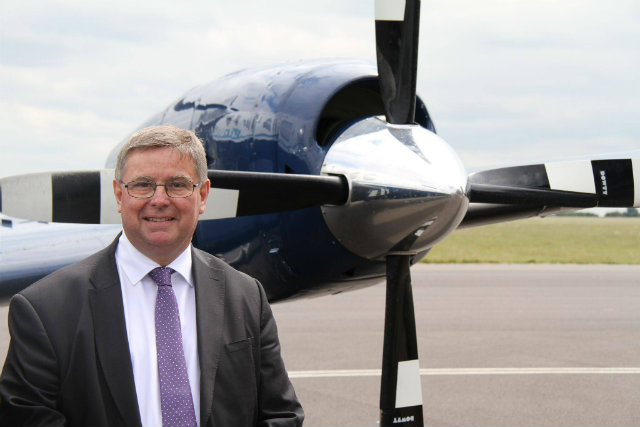What triggered your interest in aviation?
There’s a particular moment that stands out – seeing the first flight of Concorde on TV in 1969. My father was an aerospace engineer and there were all the other subliminal influences, like seeing the Vulcan and Lightning, but it was Concorde that made the real difference.
Tell us about your career?
I joined British Aerospace in 1979 – the Concorde connection encouraging me to move down to Bristol from Scotland – where I had the chance to work on the project as a stress engineer, looking at fatigue data from Farnborough. I worked on the 146 commercial aircraft programme and had the good fortune to be involved from the beginning with the Airbus A310 project. This was my way into Airbus, following a path into management positions for the development of the A320, A330/340 wing programmes, and leading on the UK involvement with the A380 and A400M. When Airbus evolved into a single company I became the managing director for Airbus in the UK, where I remained until 2007. I led the government’s original Technology Strategy Board (now Innovate UK) as its first chief executive. Aerospace is in my DNA and I was keen to continue to be part of shaping the future of aerospace, and with that in mind joined Cranfield University in 2015 as its director of aerospace.

Cranfield University
What have been the most satisfying roles?
On 27 April 2005 I stood alongside the team at Airbus who’d been working on the A380. On a big screen we saw the aircraft we’d been working on for 10 years go into service with Singapore Airlines. I’d had the chance to be part of the development from first concept to flight, leading a team of engineers. It had not been an easy project, there’d been some big challenges, but we’d seen it through together.
Tell us about your current role at Cranfield University?
Cranfield is unique in terms of its facilities – its own airport and runway, the National Flying Lab, and now the new Aerospace Integration Research Centre (AIRC) and Digital Aviation Research and Technology Centre (DARTeC). This makes it the place where universities and industry can work together to demonstrate and validate research up to the higher technical readiness levels, 6 and 7. I have the dual role of leading all the aerospace teaching, research and corporate relationships as if it were a business in its own right, as well as developing the integration of aerospace across the university with other departments, in other areas of technology, transport and manufacturing.
What are the key problems facing the UK aircraft manufacturing industry?
Challenges are also opportunities. We’re on the cusp of a major transformation in the industry and in air travel itself with the rise of autonomous technologies, AI and electric aircraft. The danger for the UK is that we’re left behind, not helping to shape and lead on the design of holistic systems and aircraft, andonly providing a supporting role in manufacturing hi-tech components. Given its heritage in aerospace, UK industry should be, and needs to be, much more than a niche partner. We need the high-value design skills in the workforce now to ensure we’re a leader.
What action needs to be taken?
There needs to be more collaboration. At Cranfield we’re assembling the kind of national aerospace research facility that can be the basis for large-scale design initiatives among groups of universities and aerospace businesses internationally. The UK government can help by both looking at ways to anchor the key traditional businesses like Airbus and Rolls-Royce, and also find ways to support the development of new clusters of the smaller firms that will be essential to the revolution in air travel. These are the companies working on autonomous technologies, the elements of high-value design that aren’t necessarily part of the traditional aerospace supply chain.
Are you optimistic about the industry's future?
It was the sense of excitement at the possibilities of supersonic travel that sparked my interest in aerospace – and we’re into another new phase of excitement around digital aviation. It’s a great time to be joining the sector.
Source: Flight International
















